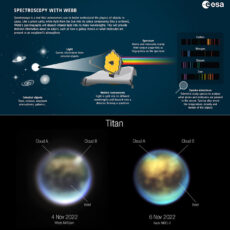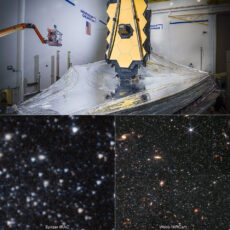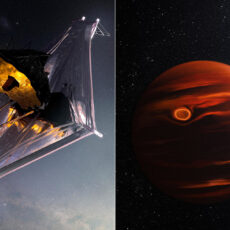
NASA’s James Webb Space Telescope recently observed the H II region in the Large Magellanic Cloud (LMC), a satellite galaxy of our Milky Way. This nebula, called N79, spans 1,630 light-years and is actually a region of interstellar atomic hydrogen that is ionized, as shown by Webb’s Mid-InfraRed Instrument (MIRI).
This region is typically regarded as a younger version of the Tarantula Nebula, which suggests that N79 has a star formation efficiency that exceeds its older counterpart. What we see in this image is one of the three giant molecular cloud complexes, known as N79 South (or S1), where the ‘starburst’ pattern surrounding this bright object is a series of diffraction spikes.
- NEXSTAR 4SE COMPUTERIZED TELESCOPE: Celestron’s iconic orange tube telescope combines 4" Maksutov-Cassegrian optics with updated technology and the...
- 4-INCH APERTURE MAKSUTOV-CASSEGRAIN TELESCOPE: 4-inch primary mirror packs enough light-gathering ability to deliver impressive views of the Moon and...
- FULLY-AUTOMATED GOTO MOUNT: With a database of 40,000+ celestial objects, NexStar SE's GoTo mount locates and tracks objects for you. It's the perfect...

At the longer wavelengths of light captured by MIRI, Webb’s view of N79 showcases the region’s glowing gas and dust. This is because mid-infrared light is able to reveal what is happening deeper inside the clouds (while shorter wavelengths of light would be absorbed or scattered by dust grains in the nebula). Some still-embedded protostars also appear in this field,” said the European Space Agency.
[Source]










